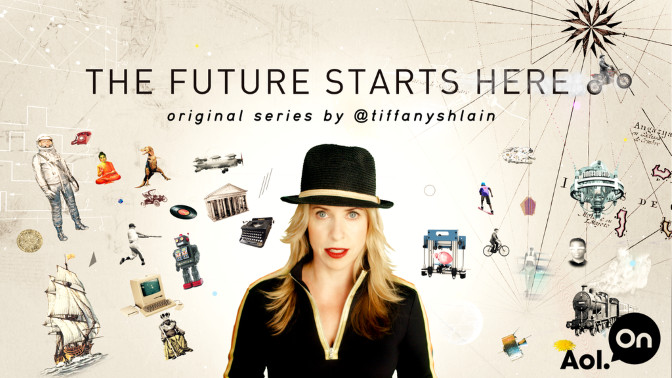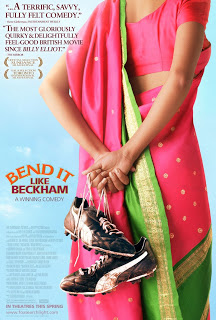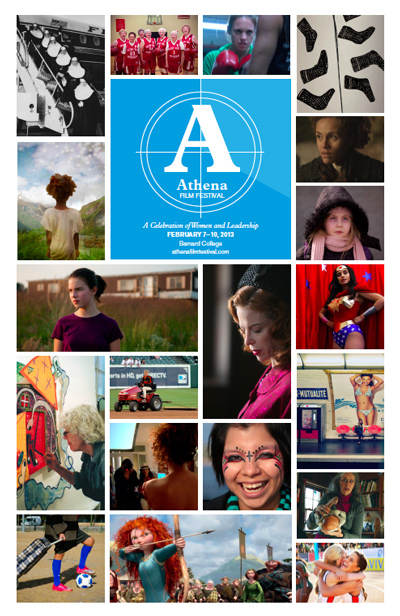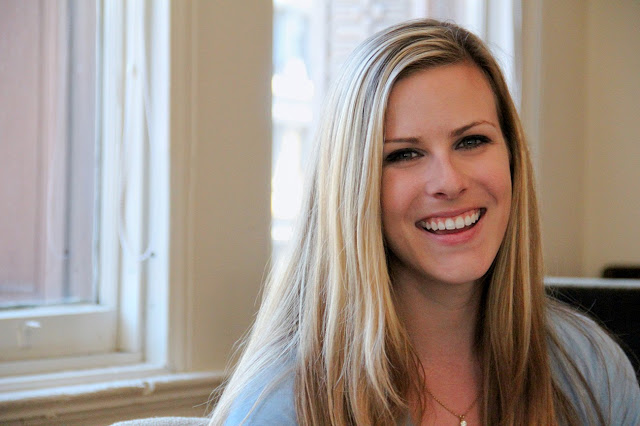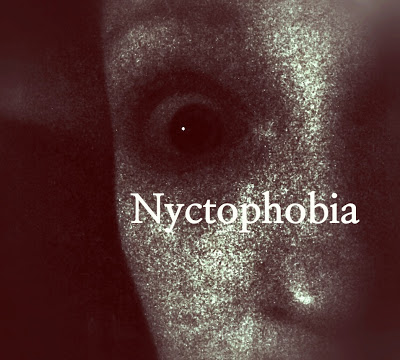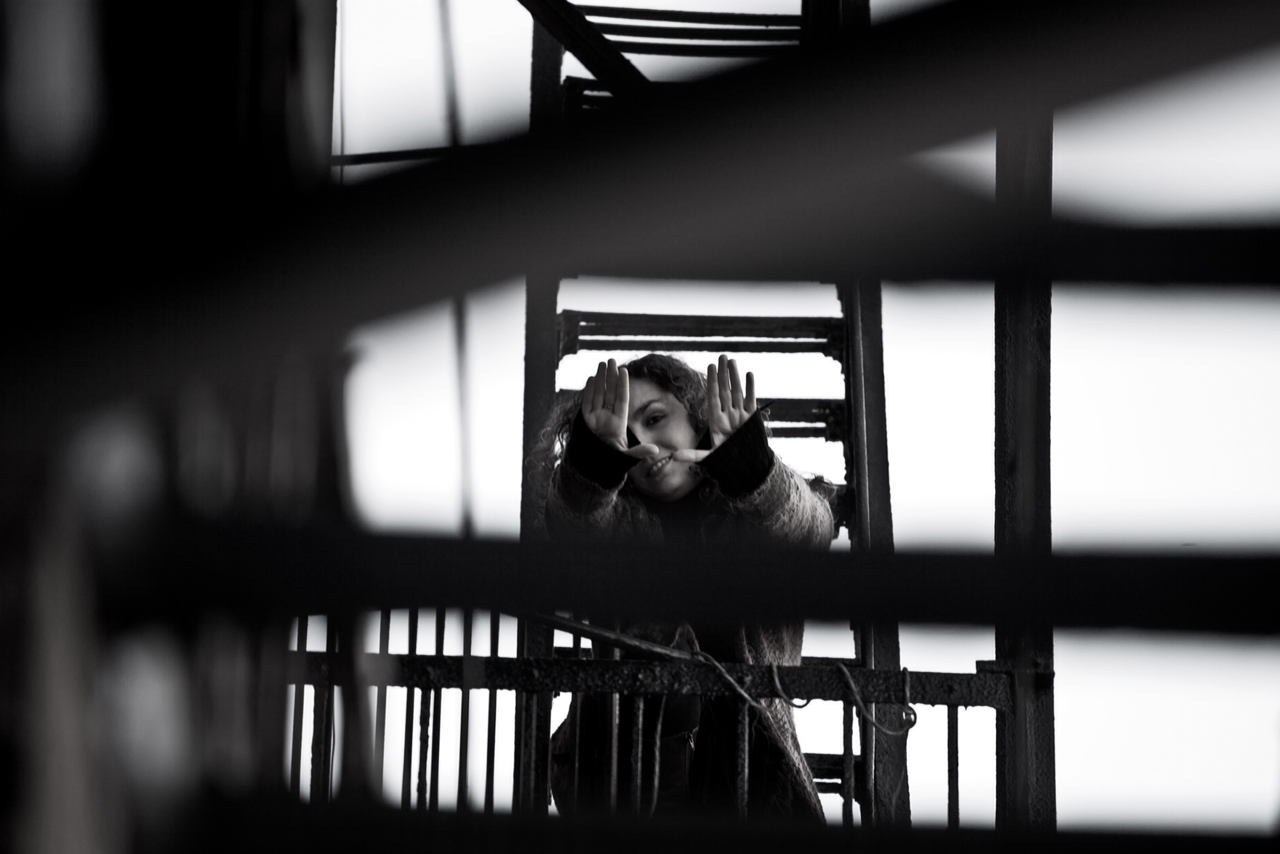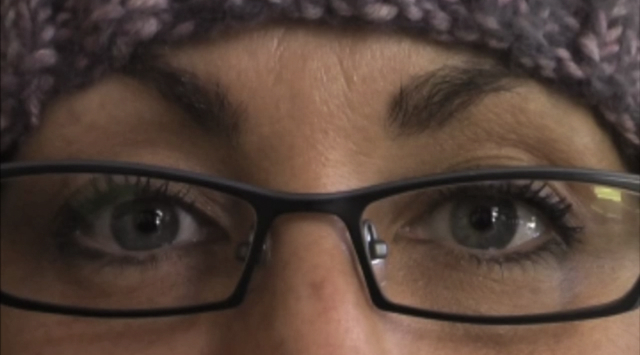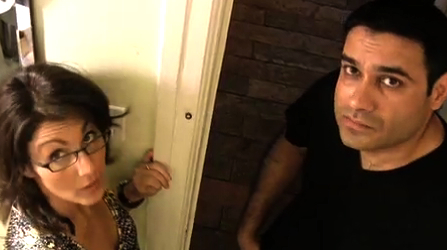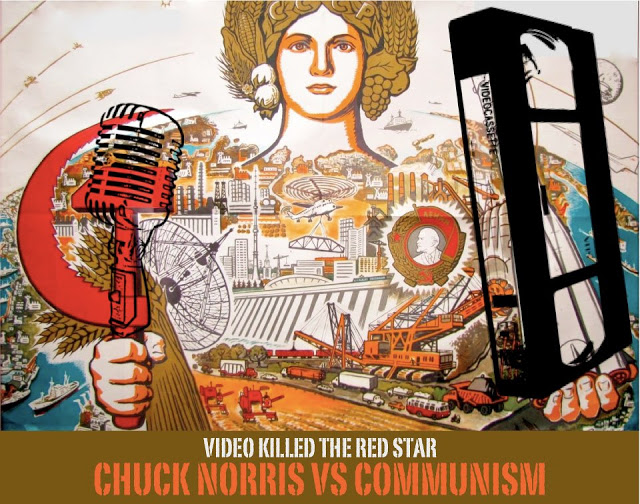Our history books have been telling the stories of just a small handful for centuries. When we look back at this time in history, the story’s going to be about the power of creative breakthroughs that include all of us.
Episode 5, “Participatory Revolution”
Bitch Flicks was lucky enough to receive an invitation to the premiere of Tiffany Shlain’s new webseries The Future Starts Here in New York City last week, and your humble correspondent was lucky enough to be the one to attend it. Shlain is, as her series’ voiceover states, a mother, filmmaker, and founder of the Webby Awards, and The Future Starts Here is an AOL-produced miniseries about being human in the digital age.
Eight bite-sized videos, The Future Starts Here will only cost you forty minutes of your life total, and it’s well worth the time. It’s a remarkable distillation of complex ideas into accessible, snappy soundbites that are thought-provoking rather than reductive, and I think it makes a fantastic general introduction to some of the complicated questions I happen to be grappling with in my own doctoral research.
Though the series is all about technology and how it is changing our lives, the first episode, “Technology Shabbat,” is about switching off. When I spoke with Shlain, she explained that this was a quite deliberate move: it serves to ground what follows in caution and self-awareness, steering the series clear of the naïve, starry-eyed techno-optimism it sometimes skirts. When I asked her if she thought technology was a force for good, she said yes, provided that we use it right. (And this assessment is clearly borne out by any brief glance at, say, internet feminist activism and the backlash thereto.)
The second episode, “Motherhood Remixed,” is the one that Shlain pinpointed as most explicitly engaging with feminist concerns. It’s an intriguing and important look at Shlain’s efforts to balance her busy workload with her family life, and it features some delightful infographics that reconfigure parental roles in admirable ways; but its concluding piece of advice is perhaps the weakest of the bunch, because “Create your own schedule or present a plan to someone who can make it happen” is simply not a workable option for many parents outside of Shlain’s socioeconomic bracket. The episode raises some excellent points about how technology can change the work-life balance, but it’s simply narrower in scope and context than some of the other pieces, and a direct acknowledgment of that fact wouldn’t have gone amiss.

A thread of feminism runs through the whole series, in a way that Shlain emphasized is intended to be accessible to the widest possible audience. Shlain told me with a sigh that she had had no end of questions about being a woman in a male-dominated arena, and she stressed that she feels her feminism is most powerfully enacted simply through being a woman and speaking with a woman’s voice. When you come down to it, this is the very heart of feminism: the most abstruse feminist theory is ultimately rooted in the many disparate experiences that we collect under the heading “being a woman.” Throughout the series, Shlain does a skillful job of integrating the fact of her womanhood, mentioning it explicitly at key moments when the non-feminist-identified viewer might be struck by it and brought to new understandings.
One of the delights of the series, and something that is perhaps at least partly attributable to a familiarity with the phrase “the personal is political,” is the seamless integration of aspects of Shlain’s personal and family life. Even outside of the episode directly concerning motherhood, Shlain grounds her musings and illustrates her ideas by using material from her own life: anecdotes about her children, examples of her family’s actions, even an episode co-helmed by her robotics professor husband (episode four, “Why We Love Robots”). This fluid movement from the micro to the macro, exemplifying the inextricable relation of the personal and the theoretical, is what good feminism does best, and in this sense The Future Starts Here is a triumph of feminism in action.
Examining aspects of technology from the simple rules of tech etiquette to the effect of participatory culture on the creative process, Shlain strikes an excellent midpoint of optimism and skepticism – what she dubs “opticism.” She expertly weaves together big ideas (referencing such luminaries as Heschel and Teilhard) and an approachable style. She ends each episode with a suggestion for action or a question for consideration. And, as noted above, she does it all in about the length of your average TV drama, if you DVR it and fast-forward through the commercials.

The Future Starts Here. What are you waiting for?
Max Thornton blogs at Gay Christian Geek, tumbles as trans substantial, and is slowly learning to twitter at @RainicornMax. He’s intrigued that a secular Jew like Tiffany Shlain and a leftist Christian like himself have such similar ideas about the philosophy of the digital revolution.
